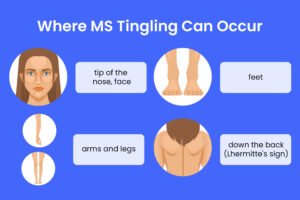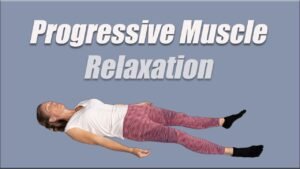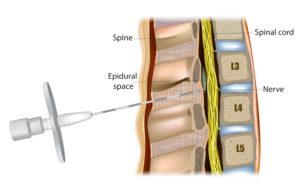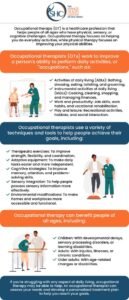Physical Therapy for Scoliosis
Understanding Scoliosis and Its Impact
Scoliosis is characterized by an abnormal lateral curvature of the spine, affecting approximately 2–3% of the global population. This condition can manifest at any age and varies in severity, from mild to severe cases that impact daily functioning. Physical therapy (PT) is a valuable tool for managing scoliosis, helping to alleviate pain, improve spinal mobility, and prevent further curvature progression.
What Causes Scoliosis?
Scoliosis can arise from various factors, including:
- Idiopathic Scoliosis: The most common form, with no identifiable cause, often appearing during adolescence.
- Neuromuscular Scoliosis: Resulting from neurological or muscular conditions, such as cerebral palsy or muscular dystrophy.
- Congenital Scoliosis: Present at birth due to spinal malformations.
The condition may develop in childhood or later in adulthood, with symptoms ranging from mild discomfort to significant physical limitations.
Recognizing Scoliosis Symptoms
Symptoms of scoliosis vary depending on the curvature’s severity and can include:
- Persistent mid or lower back pain
- Abnormal sensations in the arms or legs
- Difficulty maintaining an upright posture
- Breathing challenges or shortness of breath due to restricted lung capacity
If you experience these symptoms, consult a healthcare provider promptly for a thorough evaluation and diagnosis.
Diagnosing Scoliosis
Diagnosing scoliosis typically involves a straightforward process. A healthcare provider can often identify the condition by visually inspecting the spine for a lateral curvature. Additional diagnostic steps include:
Physical Examination
Bending forward at the waist can reveal a “rib hump,” a hallmark of scoliosis caused by spinal rotation. This physical sign helps confirm the diagnosis.
Imaging Tests
An X-ray is commonly used to assess the spine’s alignment and measure the curvature’s severity, known as the Cobb angle. This angle, ranging from 10 degrees (mild) to over 60 degrees (severe), determines the type of curve:
- C-Curve: The lumbar and thoracic spine curve in one direction.
- S-Curve: The lumbar spine curves one way, and the thoracic spine curves oppositely.
X-rays also reveal any straightening of the thoracic spine, a common feature in scoliosis.
Treatment Options for Scoliosis
Scoliosis treatment varies based on the condition’s severity and the patient’s age. Common approaches include:
- Observation: Mild cases may require only regular monitoring and exercises.
- Bracing: Recommended for moderate curves (20 degrees or more) to prevent progression.
- Physical Therapy: A cornerstone for managing mild to moderate scoliosis, focusing on pain relief and improved function.
- Surgery: Reserved for severe cases to stabilize the spine.
Physical therapy is particularly effective for many patients, offering non-invasive strategies to enhance spinal health and quality of life.
Physical Therapy for Scoliosis Management
Physical therapy plays a critical role in scoliosis care, addressing pain, posture, and mobility through tailored interventions. Here’s how PT can help:
Initial Physical Therapy Evaluation
Your first PT session involves a comprehensive assessment, including:
- A detailed interview about your symptoms, diagnosis, and medical history
- Review of any X-rays or braces you use
- Measurements of posture, spinal mobility, strength, balance, lung function, and functional movement
Wear comfortable clothing to this appointment, as you’ll likely engage in various physical assessments. The therapist will use this information to set personalized goals and design a treatment plan.
Goals of Physical Therapy
Physical therapy for scoliosis aims to:
- Reduce pain and discomfort
- Enhance spinal alignment and posture
- Strengthen muscles supporting the spine
- Improve flexibility and range of motion
- Optimize breathing and lung function, which may be impaired by spinal curvature
Your therapist will guide you through exercises and techniques to achieve these objectives, often starting with a home exercise program to complement in-clinic sessions.
Bracing as a Supportive Measure
For individuals with a Cobb angle of 20 degrees or greater, bracing may be prescribed to halt curve progression, particularly in adolescents who are still growing. Common scoliosis braces include:
- Boston Brace: A rigid brace designed to hold the spine in place and prevent further curvature.
- SpineCore Brace: Allows some movement but is less effective at stopping curve progression.
- Gensingen Brace: Aims to correct curvature and reduce the Cobb angle, with studies showing mixed results in halting or reducing curve progression.
Braces are typically worn for 20 hours daily, including during sleep, but can be removed for bathing or specific activities. Adolescents should continue bracing until skeletal maturity, as confirmed by X-ray.
Staying Active with a Brace
Bracing doesn’t mean limiting activity. Most healthcare providers encourage patients to remain active, including participating in sports, to maintain overall health and mobility.
Physical Therapy Interventions for Pain Relief
If scoliosis causes back pain, your physical therapist may employ various techniques to provide relief, such as:
- Heat Therapy: Increases blood flow and relaxes tight muscles.
- Cold Therapy: Reduces inflammation and numbs pain.
- Electrical Stimulation (TENS): Uses low-level electrical currents to alleviate pain.
- Ultrasound: Delivers deep heat to improve tissue flexibility.
- Kinesiology Taping: Supports muscles and reduces discomfort.
- Massage Therapy: Eases muscle tension and spasms.
While these passive treatments can offer temporary relief, their effectiveness for scoliosis-related pain is not universally proven. The cornerstone of long-term management lies in active interventions like exercises and posture training.
Scoliosis-Specific Exercises
Exercise is a vital component of scoliosis management, helping to strengthen the spine, improve posture, and reduce discomfort. A daily exercise routine may focus on:
- Enhancing respiratory function
- Increasing postural awareness
- Strengthening core and spinal muscles
- Correcting muscular imbalances to alleviate joint pain
Your physical therapist will design a personalized exercise program that you can perform at home, ensuring consistency and long-term benefits.
Empowering Self-Management
The most effective scoliosis management strategies empower you to take control of your condition. By combining physical therapy, bracing (if needed), and a dedicated exercise regimen, you can minimize pain, improve spinal function, and reduce the likelihood of curve progression. Regular follow-ups with your healthcare team will ensure your treatment plan evolves with your needs.
For more information on managing scoliosis or to explore physical therapy options, consult your healthcare provider or a licensed physical therapist.
💡 Frequently Asked Questions
An Assessment of Bodily Cure What Is Scoliosis?
Answer coming soon. We are working on detailed responses to this common question.
How Lengthy Need to Actual physical Cure Choose?
Answer coming soon. We are working on detailed responses to this common question.
⭐ Expert Tips
- Include seasonal or trendy variations to keep your meals exciting.
- Highlight prep shortcuts or time-saving techniques for busy cooks.
- Consider dietary restrictions and include substitution suggestions.
✅ Key Takeaways
- These dinner ideas are perfect for impressing guests or enjoying special occasions.
- Choose recipes that match your skill level and available kitchen tools.
- Presentation and taste both contribute to a memorable dining experience.
📣 Join Our Community
Want more inspiration like this? Subscribe to our newsletter for weekly dinner ideas and cooking tips!








